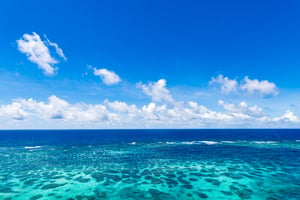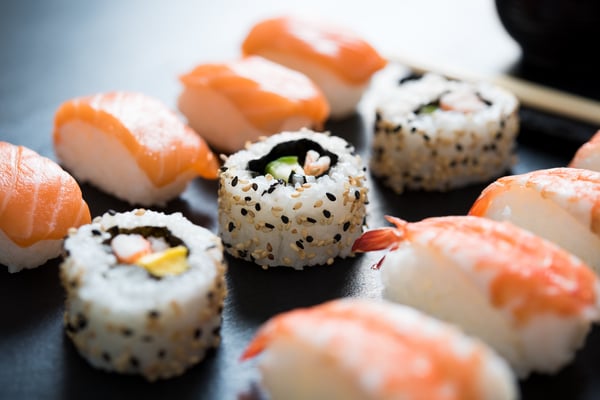Japan were the people’s choice. Chosen as the winners of Penguins Incentive Travel World Cup! With 31 other countries in contention it was no easy win. Here are just a few reasons why:
Geography
Japan’s incredible geography allows you to visit somewhere like the snowy climbs of Hakuba – a village located in the Japanese Alps – that offers natural hot springs, with the perfect terrain for snowboarding, skiing and hiking. Then

hop on a plane and within a few hours be in the tropical climate of an island such as Miyakojima. Here you can bask in the sun on one of the white sand beaches; or explore the breath-taking coral reefs amid the crystal clear waters.
Japan is home to many mountain ranges, hot springs, volcanoes and archipelagos; this is due to the country being located in a region where several continental plates meet. Being in such a unique geographical position allows for some of the most instagrammable experiences you could imagine. Such as marvelling at Mt. Fuji and, if you’re brave enough, attempting the trail up Japan’s largest mountain and volcano.
Culture
Japan is steeped in a culture that has captured the world’s attention for many years. In Japan you can find centuries-old traditions such as the tea ceremonies or the art of the Geisha in the heart of some of the most technologically advanced cities on the planet. The juxtaposition between the cultures of its past and modern day cultures prove Japan’s versatility as an incentive destination.
Arguably the most well-known aspect of Japanese culture are Geishas or Geikos. They are young women who train and study for years in music, dance and how to maintain flowing, comfortable conversations. They paint their faces white, their lips red and dress in traditional kimonos. It is a very well respected and difficult profession; the girls are to be professionals in Japanese traditional culture and entertainment. It is possible to meet a Geisha, however it’s a rarity, even native Japanese find Geisha’s a mystery. You can either book a private session with a Geisha or go to Kyoto, where they live, in the hope that a Geisha will show herself.
In addition to Geishas, there are Samurais; Unfortunately there are no longer practicing Samurais – in the late nineteenth century the Samurai class was abolished – however Japan is very proud of its past warriors and across the country there is evidence that “the way of the warrior” is still well respected. Samurai ideals have transcended throughout Japanese history and understanding the samurai heritage provides an interesting insight into today's modern society and the respect, discipline and honour that is prevalent throughout this unique nation. If you wish to learn more about the Samurais you should visit Shimabara – it’s a well-preserved castle town, whose castle is surrounded by old temples, shrines and the houses of Samurai.
Find out more about Samurais here.
The Japanese tea ceremony is a ritual to behold – it is a spiritual process in which participants seek harmony and inner peace. This was bought about in the seventh century and is a very popular cultural spectacle for visitors to the country.
Main steps of a typical tea ceremony:
- On the day of the tea ceremony, the host rises very early in the morning to start preparations.
- When guests arrive, they are led through the garden, then wash their hands to cleanse themselves symbolically of the dust of the outside world. They have to step through a small door, which ensures the guests bow in respect. The door is also a barrier to the outside world, helping to create a sense of sanctuary.
- Kneeling on a cushion, the host cleans his or her tools with graceful movements. Purified water is boiled in an iron kettle on a stove sunk into the floor.
- A silk cloth (fukusa), representing the host’s spirit, is taken from their kimono sash. It’s symbolically inspected, folded and unfolded, before being used to handle the hot iron pot.
- Matcha – green tea ground to a fine powder – and several ladles of hot water are added to a bowl and whisked thoroughly.
- The bowl of matcha is handed to the first guest, who rotates the bowl 180º in two turns before taking a sip, so as to avoid drinking from the decorative front of the bowl. Each guest wipes the bowl before passing it on.
- Pretty wagashi sweets, sometimes made from azuki bean paste, are served to complement the bitterness of the tea.
- After the bowl is handed back to the host, the tools are cleaned and the ceremony is brought to a close.
Taken from Rough Guides
Cuisine
Japanese cuisine is very infamous, and in recent years it has become much more popular and appreciated around the world. Japanese food is generally traditionally prepared, visitors may not be expecting the variety of cuisine that Japan has to offer.The most significant Japanese dish has to be sushi. It has become very popular throughout the world, people travel to Japan with an expectation of trying authentic sushi. It is made with ingredients such as fish, prawns, seaweed, rice, cucumber etc.

Another famous Japanese dish is yakitori. It is grilled chicken generally seasoned with sweet and salty shoyu-based sauce. This is another Japanese delicacy that has been introduced across the globe.Tempura is a favourite of Japanese people – again, this has become popular around the world. Tempura is prepared by dipping seafood or vegetables in a batter made of flour, water and egg and the deep-frying them in vegetable oil.Most Japanese cuisine has become popular globally – this is a testament to how delicious Japanese food is and how it has been welcomed by countries across the world.
DESTINATION ROUNDUP
You need to visit:
- Tokyo - The street fashion, exquisite cuisine and fast track transport systems make the capital city a 'must see' when visiting Japan. Tokyo teams tradition and tech to entice it's visitors, and the nightlife isn't' too shabby either.
- Osaka - A huge city with a small town warmth. With nearly 3 million inhabitants, Osaka has a controversially warm country feel to it. There is a buzzing shopping scene, where you can purchase anything from electronics to luxury brands.
- Kyoto - There are 1,600 Zen, Shinto, and Buddhist temples and shrines in the city; you can also find the famous Sagano Bamboo Forest, which is quite ethereal. Kyoto is famous for its cherry blossoms, which are best seen in April.
Travel details:
- Tokyo GMT + 8 hours
- 11 hours 40 from LON
- Best to travel late spring and late autumn

By Maisie Tomlinson
Marketing Co-ordinatorMore articles by Maisie Tomlinson
/RS20188_Penguins_logo_MASTER_2COLOUR%20(1).png?width=1434&height=480&name=RS20188_Penguins_logo_MASTER_2COLOUR%20(1).png)
